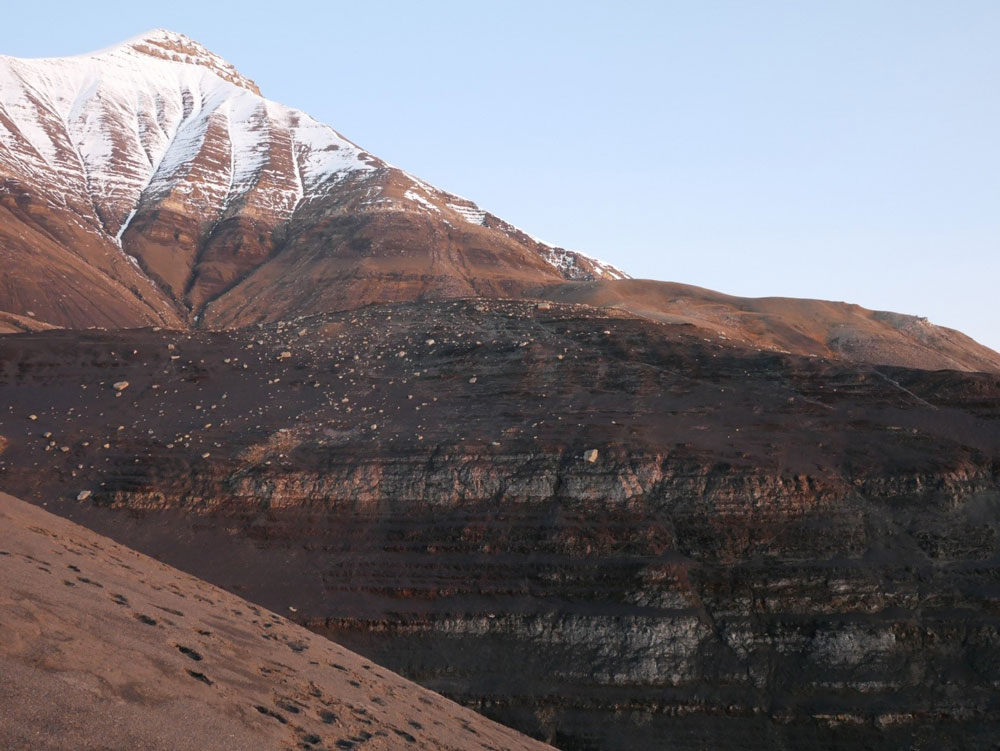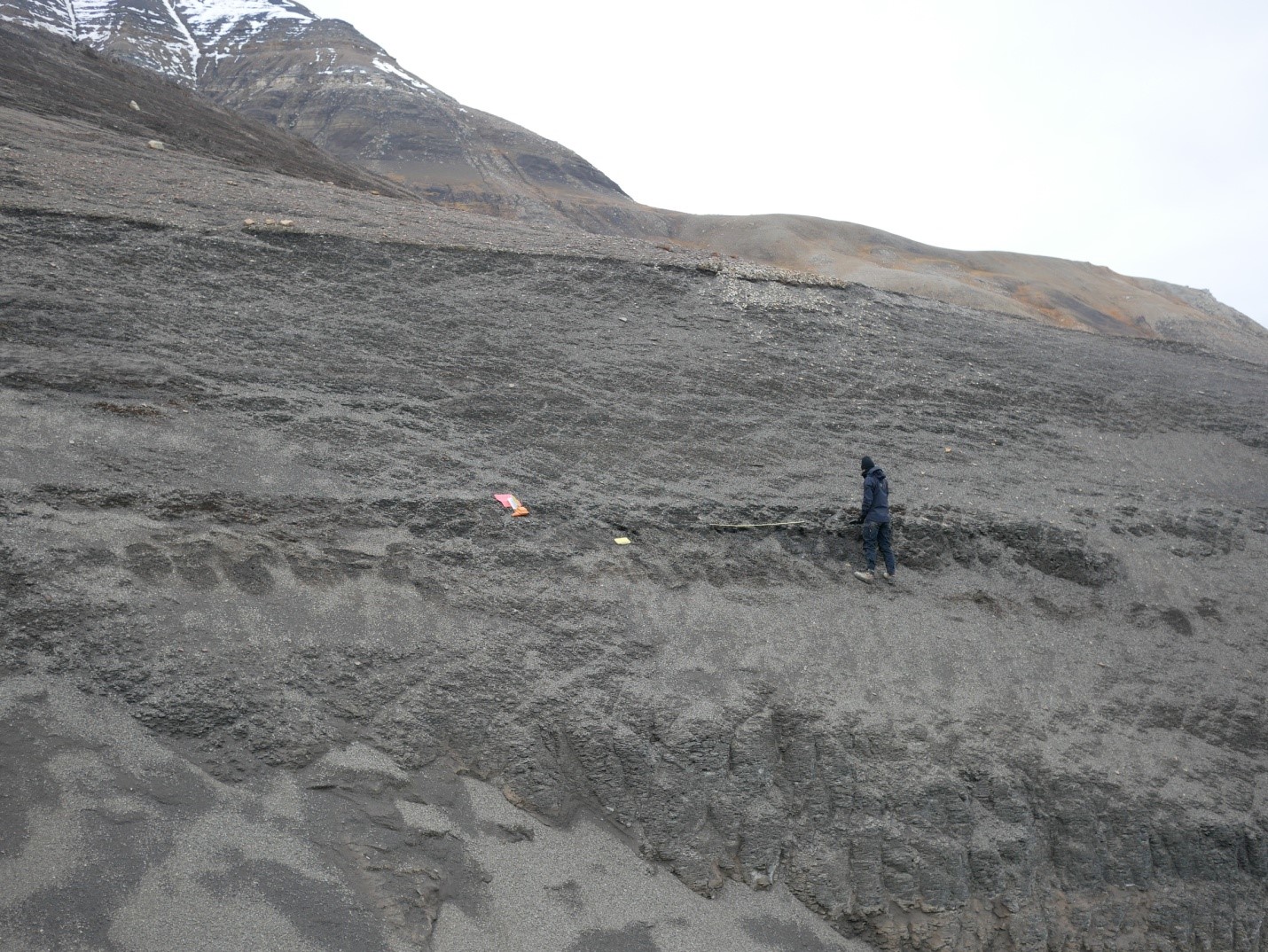NCCS (Norwegian CCS Research Centre) envisages injection and storage of CO2 into subsurface aquifers of the northern Horda Platform which is situated in the Norwegian sector of the North Sea. In this blogpost I will explain the primary research questions Task 9 (Structural derisking) is addressing in NCCS. More specifically, I will detail the utilisation of a NCCS mobility Fund in order to conduct a field-based caprock integrity analysis on the arctic archipelago of Svalbard.
The northern Horda Platform is comprised of a series of tilted fault blocks and associated sedimentary basins which formed during two phases of continental rifting in the Permo-Triassic and Mid Jurassic – Lower Cretaceous, respectively. Thick sequences of sand-prone continental and marine clastic sediments in-filled these sedimentary basins and offer porous and permeable storage formations for potential CO2 storage.
- You might also like: Utilization of Municipal Solid Waste to Achieve Negative CO2 Emissions
As principal researcher on NCCS Task 9, at the University of Oslo (UiO), I am charged with addressing knowledge gaps pertaining to how subsurface heterogeneities (e.g. faults and fractures) will influence CO2 migration and containment. Task 9 investigates the following criteria, in order to determine if CO2 can be stored within the Horda Platform subsurface.
- Storage prospects bound by large displacement faults must be able to contain a CO2 column without risk of leakage (across/along faults).
- Storage prospects must be capped by domal closures and a continuous impermeable caprock.
- Existing faults/fractures must not reactivate due to injection related pressure increase (risk of leakage along faults).
Learn more about CCS
Join our newsletter to stay updated with all the latest research results and news from NCCS: The Norwegian CCS Research Centre.
NCCS mobility fund provided important field-based caprock integrity analysis
To date Task 9 has focused on seismic scale workflows to investigate the aforementioned criteria. The NCCS mobility fund facilitated a complementary field-based caprock integrity analysis of a succession that outcrops onshore Svalbard and is analogous to the primary caprock in the North Sea (Draupne Formation).
On Svalbard, this succession has been previously investigated as a potential caprock by the University Centre on Svalbard (UNIS) CO2 lab, a project which envisaged capture of CO2 from the local coal burning plant and injection into Triassic formations in the subsurface. This pre-existing knowledge base provides a wealth of data that can be utilised by Task 9.
In collaboration with Dr Kim Senger, Associate Professor at UNIS, I spent four weeks on Svalbard during August and September of this year where I participated in a field campaign followed by computer lab work aimed at synthesizing outcrop observations with the pre-existing Svalbard geomodel established over the past decade by the UNIS CO2 lab. The fundament of the research is to assess the reactivation potential of heterogeneities intersecting the caprock and as such determine caprock integrity.
Collecting fault data in the presence of polar bears
I participated in week one of a two week field campaign along with Lise Nakken, and Karoline Løvlie, two NCCS affiliated MSc students from UiO who I co-supervise, and UNIS PhD candidate Peter Betlem. The field camp was based at Deltaneset, a headland 15 km northeast of Longyearbyen in an old UNIS owned cabin which shows wear and tear owing to several polar bear invasions over the year. Thousands of orientation measurements from faults and fractures were taken as well as information on aperture, mineral infill, vertical extent and frequency.
The MSc student’s theses will focus on determining the three-dimensional connectivity and fluid flow implications of these features, ultimately accessing the integrity of this formation as a caprock. Further, a dense series of drone images where captured in order to construct three-dimensional virtual outcrop models used to measure features remotely.
Key findings are the presence of low angle normal faults in the lower part of the Agardhfjellet Formation, and low angle reverse faults in the upper part. All these faults are too small to image with conventional seismic surveys but can influence fluid flow nonetheless. Higher fracture frequency up section is also apparent.
Apart from cold feet and a visit from a large male polar bear on day two of the field campaign, week one was a success and resulted in acquisition of a large data set for caprock integrity analysis. The field party were somewhat less successful on week two, as the polar bear returned and decided to take up residence adjacent to the field camp. The team were evacuated and missed three days of work, but recommenced after the bear moved elsewhere.
Geomodel of subsurface faults
Back in a much warmer seismic interpretation lab at UNIS, caprock integrity analysis was conducted. The subsurface geomodel was populated with faults utilising orientation, vertical extent, frequency and spacing data determined from the field campaign. Fault reactivation is a function of the in-situ stress direction and magnitude, pore pressure, fault geometry and fault rock geomechanical properties. Much of this data had already been determined by the UNIS CO2 Lab’s drilling campaign.
The caprock integrity analysis results show subsurface faults are not prone to reactivation. The variable topography of Svalbard has some effect on the in-situ stress magnitudes at depth, however, never compromises fault integrity. We hope to model fracture reactivation potential early next year with the products of the MSc work.
Reflection
Primarily working with seismic data limits the resolution of our investigations. Sub-seismic heterogeneities, however, could also compromise the integrity of a caprock and must be considered.
The NCCS mobility fund has facilitated Task 9 to expand our subsurface analysis to outcrop-based caprock integrity analysis, access a wealth of data from the UNIS CO2 Lab, and further address knowledge gaps associated with heterogeneities in the subsurface.
I wish to thank Kim Senger, and the University Centre in Svalbard for facilitating my stay, and the field team for contributing to a successful and enjoyable field campaign.


Learn more about CCS
Join our newsletter to stay updated with all the latest research results and news from NCCS: The Norwegian CCS Research Centre.

Pingback: Digital drill core models: Characterising and storing samples from Svalbard - #SINTEFblog